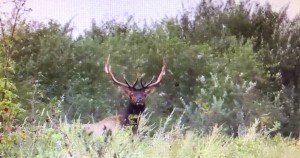 Won’t be long until the bulls are bugling out West; these these tips to bring one in.
Won’t be long until the bulls are bugling out West; these these tips to bring one in.
- If you are calling to a bull that is bugling and coming in, make sure he’s coming from a direction that won’t cause him to cut the track you just made getting to your set up. An elk’s nose is very good and if he cuts your track, even if the wind is in your favor, he might shut up, turn around and bug out. Mark his bugles and move your setup if you must. Spray your clothes and boots heavily with scent-killer.
- It’s best to have a buddy call for you. Have him set up 75-100 yards behind you, downwind of where you hope to get a shot at a bull. While the caller might not be able to see a bull coming in, the bull will be looking for the caller. If the bull can’t pinpoint the source of the calls, he will keep coming, hopefully right to you and in good shooting position.
- Give each setup at least 30 minutes, and it’s better to wait 45 minutes. Many bulls come in to calls slowly and silently, especially if the rut isn’t in full swing yet. Or maybe a bull just got his butt kicked by another bull. Remember, not every bull comes in quickly or comes in bugling, so give it time.
- An elk decoy can be a hassle to pack, but try one. A bull expects to see a cow or another bull when he is coming in to a call. A decoy gives elk confidence that there are elk nearby.
- Be aggressive and make noise! Elk are noisy, and when a bull comes in to a call he expects to hear elk as he gets closer. A decoy can help visually, but you and your calling buddy should roll some rocks, break twigs and make stomping sounds. This adds to the illusion that elk are close, and can help to convince a bull to come in.





